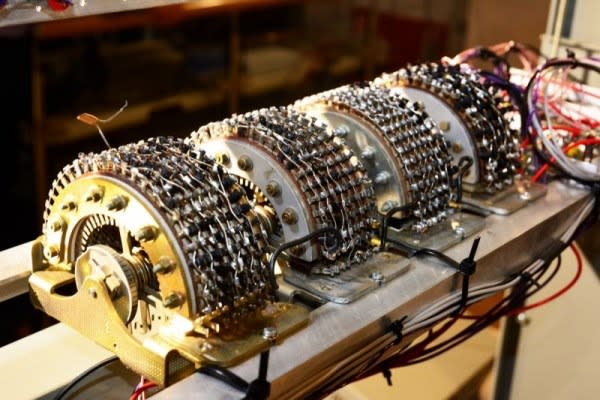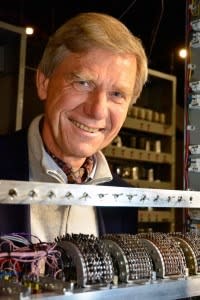National Museum of Computing opens EDSAC display, recreating 1949's top computer

EDSAC's reconstructed uniselector: the equivalent of boot ROM in a modern PC. Image credit: Edsac Project
The National Museum of Computing (TNMOC) at Bletchley Park has opened a new display featuring the reconstruction of EDSAC, one the world's most influential computers. The original EDSAC (Electronic Delay Storage Automatic Calculator) was built at the University of Cambridge just after World War II, and formed the basis of LEO (Lyons Electronic Office), the world's first business computer.
A team of about 20 volunteers led by Andrew Herbert has been working on the EDSAC reconstruction for about two years, and the project should be completed next year. There's now enough of the machine to interest visitors. In the future, young people will be encouraged to write programs for the sort of machine that, according to computer historian Martin Campbell-Kelly, marked the beginnings of computer programming.
TNMOC says: "At the official opening of the exhibit, several key elements of EDSAC were demonstrated. Bill Purvis showed how a program would be input before the advent of keyboards and how the result would be output before screens became commonplace. Peter Linnington revealed how, at the start of the computer age, delay lines were used as stores. As the climax, Chris Burton switched on of the EDSAC clock, the beating heart of the machine."

Hermann Hauser opening the EDSAC Replica display. Image credit: Edsac Project
EDSAC was designed to provide computing services to researchers at Cambridge University, which it did from 1949 until l958, when it was replaced by EDSAC 2. Its users won several Nobel prizes. Doron Swade, co-founder of the Computer Conservation Society, said: "EDSAC provided, for the first time, reliable computing capability for scientists. It could be said that EDSAC invented the user as a distinct class of practitioner."
EDSAC was created from scratch after Sir Maurice Wilkes visited the USA to learn about computing from J Presper Eckert, John Mauchley, John von Neumann and other pioneers. It was over two metres high and used more than 3,000 valves (vacuum tubes). It had around 2K of memory and performed 650 instructions per second, making it roughly 1,500 times faster than the mechanical calculators it replaced.
The EDSAC Replica Project was funded by a consortium of corporate and private donors led by Hermann Hauser, who opened the exhibit. Hauser was co-founder of Acorn, the Cambridge company that sold the BBC Micro in the 1980s and developed the ARM processor now used in the vast majority of smartphones and tablets.


